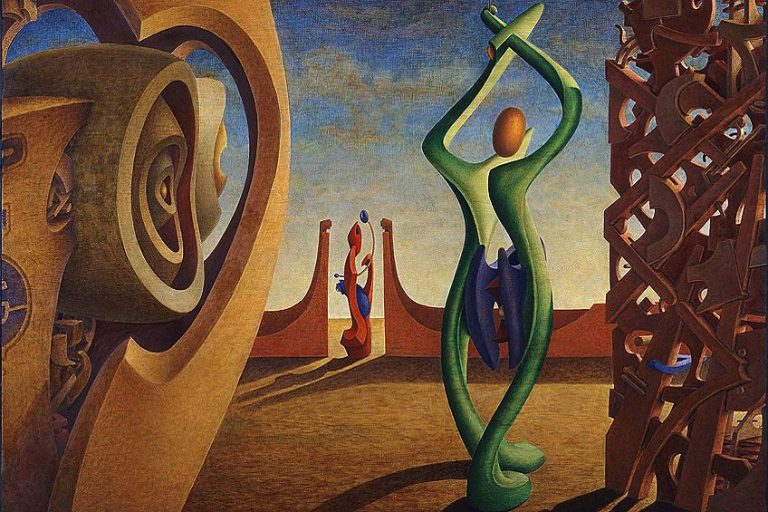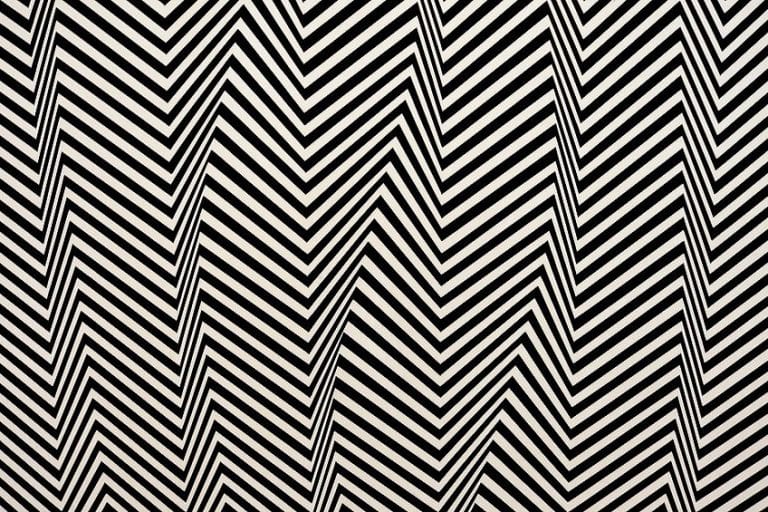Louvre Considers Moving “Mona Lisa” to Underground Chamber
The Louvre’s contemplation of relocating the Mona Lisa to an underground chamber has sparked widespread discussion within the art world. This iconic masterpiece, painted by Leonardo da Vinci during the Renaissance, has long been a centerpiece of the museum’s collection, drawing millions of visitors annually. The potential move raises questions about preservation, accessibility, and the evolving role of museums in showcasing priceless works of art. This article delves into the motivations behind this proposal and the implications it may have for art lovers and cultural institutions alike.
Key Takeaways
- The Louvre is exploring the relocation of the Mona Lisa to a specialized underground chamber to improve visitor experience.
- The proposed move addresses the need for better crowd management and artwork conservation.
- Response to the change, logistical considerations, and effects on public access are central to planning for the painting’s future display.
The Provenance and Significance of the Mona Lisa
Amidst the sea of visitors that flock to the Louvre each year, one artwork eclipses all others in popularity: Leonardo da Vinci’s Mona Lisa. Renowned for her enigmatic smile, the portrait garners attention from millions, making it one of the Louvre’s most prestigious pieces. The museum, grappling with the overwhelming crowds and the challenges of displaying such a celebrated piece, has proposed a significant change to the iconic painting’s exhibition: a move to a new, dedicated underground chamber. This move aims to enhance the visitor experience and ensure the painting’s preservation amidst high foot traffic.

The Louvre’s consideration of an underground relocation for the Mona Lisa speaks to the balance between accessibility and conservation. The current setting, shared with other artworks, is often crowded, which not only poses a risk to the artwork but also diminishes the quality of the public’s experience. Rehousing the Mona Lisa in a purpose-built underground space would not only address the logistical challenges presented by the millions of annual visitors but also provide a more controlled environment for one of the most valuable paintings in the world.
Historical Value of Da Vinci’s Masterpiece
Leonardo da Vinci created the Mona Lisa in the early 16th century, during the Italian Renaissance, a period renowned for significant developments in art and thinking. As one of Da Vinci’s most acclaimed works, the Mona Lisa is celebrated for its revolutionary use of techniques like sfumato and chiaroscuro, which contribute to the painting’s lifelike quality and enigmatic atmosphere.
Her elusive smile and the painting’s intricacy have captivated audiences for centuries, securing its status as a priceless piece of art history. This artwork is emblematic of Da Vinci’s genius, demonstrating his mastery across disciplines.
Mona Lisa‘s Impact on the Louvre Museum
The Louvre Museum is the current home of the Mona Lisa and is the most visited art museum in the world. The presence of Da Vinci’s painting significantly contributes to the Louvre’s prestige and visitor numbers. Researchers estimate that up to 80% of visitors, around 9 million annually, come to the Louvre with the primary aim of viewing the Mona Lisa. It is the main draw for many who visit the museum, and the artwork’s location in the Louvre has become a cultural landmark within the gallery space. The sheer number of visitors the painting attracts emphasizes not only the artwork’s fame but also its importance to the museum’s prominence and economic vitality.

Proposed Relocation Details
In a bid to improve the exhibition condition and address visitor concerns, the Louvre is planning to move the Mona Lisa to a new underground room designed with the latest technology and security measures.
Renovation and Budget Considerations
The Louvre Museum has identified the need for a renovation that would cater to both the increasing number of visitors and the preservation of its esteemed collections. A significant part of this renovation includes the creation of a separate room for the Mona Lisa. The renovation budget has to consider not just construction costs but also the integration of state-of-the-art climate control systems to protect the artwork from humidity and temperature fluctuations. Understanding climate change activists’ interests, the museum must ensure efficient energy use in its design. Funding comes from a combination of ticket sales, private donations, and possibly state budget cuts requiring strategic allocation.

Enhancing Viewing Experience With Modern Technology
Art lovers and curators alike have highlighted the need to enhance the experience of viewing the Mona Lisa. The intended separate room aims to utilize anti-reflective glass and advanced display technology to ease viewing issues currently exacerbated by glare and crowd congestion.
Technology such as security glass—likely bulletproof—will play a dual role in securing the painting and offering an unobstructed view, possibly in a special exhibition format that allows for a more intimate and informative experience.
Security and Preservation in the Underground Room
The commitment to the artwork’s security and preservation is paramount in the intention to move the Mona Lisa to an underground chamber. This room will be built to include optimal conditions for humidity and temperature control, essential for the preservation of the painting. Additionally, robust security measures, including advanced security glass and surveillance, will ensure the painting’s protection against vandalism or theft. The move is a strategic response not only to visitor experience improvements but also to the long-term preservation concerns held by curators and preservationists.

Public and Critical Response
The Louvre’s decision to move the Mona Lisa to an underground chamber has elicited varied responses from the public and critics, with opinions ranging from positive anticipation to concerns over the change.
Analysis of Online Reviews and Opinions
Visitors and the public largely express their sentiments through online platforms. A selection of online reviews reveal a mixture of excitement and skepticism. Positive comments appreciate the potential for improved viewing experiences, while negative feedback points to fears that an underground relocation may diminish the painting’s grandeur. Notably, social media platforms and travel forums detail visitor concerns over overcrowding and the possibility of a less prestigious setting in the underground chamber.

Cultural and Artistic Perspectives
From a cultural standpoint, key figures such as Laurence Des Cars, the Louvre’s President-Director, and Vincent Delieuvin, the Chief Curator, play pivotal roles in shaping and defending the decision. French newspapers like Le Figaro have carried their expectations that the move would address the overcrowding especially in anticipation of the Olympic Games, while alleviating concerns that the Mona Lisa had become a ‘disappointing masterpiece’ due to visibility issues in the Salle des Etats.
Art critics and some representatives of the Ministry of Culture have discussed the impact on the painting’s historical and cultural significance, where some voices argue that such a significant work deserves its own dedicated space free from the regular traffic of temporary exhibitions.
Others point out that moving the Mona Lisa could be seen as giving in to the pressures of mass tourism, rather than preserving the traditional museum experience. Some members of the public go further to protest against the commodification of art, viewing this move as a step towards treating venerable artworks as mere tourist attractions. Yet, many acknowledge the logistical necessity of the decision to accommodate the large number of visitors.
Logistical Challenges of the Move
The Louvre Museum in Paris, the most-visited museum in the world, is considering moving the Mona Lisa to an underground room. This decision addresses the need for a better visitor experience amidst overwhelming crowds, especially since the Salle des Etats, the current location of the famed artwork, often becomes congested with tourists waiting in line to see the global icon.

Planning for Increased Tourist Influx
The Louvre faces increased pressure to accommodate a rising number of visitors, which further escalates during global sports events and peak seasons. A comprehensive plan must be devised to manage tourist inflow, ensuring that access to the Mona Lisa remains orderly and meets high demand. Barrier systems and subterranean entry points must be constructed to streamline the flow without compromising the integrity of other artworks and museum operations.
Moreover, the Louvre’s Chief Curator and administrative body must coordinate the repositioning without hindering the face-to-face relationship visitors have with the Italian painting.
- Maximize space utilization: Ample space surrounding the Mona Lisa for viewing and circulation.
- Barrier optimization: Implement barriers that direct flow while maintaining the artwork’s visibility.
- Timed entries: Introduce timed tickets to control crowd size and waiting times.
Addressing Accessibility and Infrastructure
In moving to an underground room, the Louvre must ensure that accessibility standards are met for all visitors, including those with mobility issues such as the elderly or people in wheelchairs. It involves the integration of anti-reflective technology to protect the painting and enhance viewing while ensuring this technology can withstand potential threats, akin to the cake or acid attacks that have previously targeted artworks. The Grand Louvre project’s experience can serve as a valuable reference point for state spending regarding infrastructural updates, keeping the Mona Lisa accessible and secured.

- Infrastructure reinforcement: Strengthening of floors, walls, and security systems to support increased traffic and protect the artwork.
- Accessibility measures: Ramps and lifts for wheelchair users and the mobility-impaired, as well as clear signage to navigate the subterranean space easily.
The meticulous planning of these logistical aspects ensures that the Mona Lisa‘s relocation to an underground chamber addresses the complexities of increased visitation while maintaining the artwork’s renowned status.
The debate surrounding the potential relocation of the Mona Lisa to an underground chamber at the Louvre underscores the complex balance between preservation and public access in the realm of art conservation. While the idea of moving such an iconic masterpiece may raise concerns, it also highlights the ongoing efforts by museums to ensure the long-term safety and enjoyment of priceless artworks. Ultimately, whatever decision is made regarding the Mona Lisa‘s placement, it will undoubtedly continue to inspire fascination and admiration for generations to come.
Frequently Asked Questions
What Measures Are in Place to Protect the Mona Lisa in the Louvre?
The Louvre currently employs state-of-the-art security and conservation techniques to protect the Mona Lisa. These include climate-controlled cases, bulletproof glass, and a restricted area to maintain distance between the painting and museum visitors.
What Are the Reasons Behind Moving the Mona Lisa to an Underground Chamber?
The primary reasons for considering the move are to improve the visitor experience and manage the high traffic effectively, which often leads to crowded conditions and brief viewing times for the Mona Lisa. An underground chamber could potentially allow for more controlled access and a better viewing situation.
What Security Challenges Does the Louvre Face With Famous Paintings Like the Mona Lisa?
The Louvre faces challenges related to ensuring the safety of the Mona Lisa from potential theft, vandalism, and the wear and tear of millions of annual visitors. High traffic can also complicate emergency response and the preservation of a secure perimeter around the artwork.
Could Moving the Mona Lisa Affect Its Preservation Condition?
Relocating the Mona Lisa may change its preservation conditions, necessitating careful planning to maintain the painting’s environment. Factors such as temperature, humidity, light exposure, and the stability of the new location must be meticulously controlled to prevent any deterioration of the artwork.
Isabella studied at the University of Cape Town in South Africa and graduated with a Bachelor of Arts majoring in English Literature & Language and Psychology. Throughout her undergraduate years, she took Art History as an additional subject and absolutely loved it. Building on from her art history knowledge that began in high school, art has always been a particular area of fascination for her. From learning about artworks previously unknown to her, or sharpening her existing understanding of specific works, the ability to continue learning within this interesting sphere excites her greatly.
Her focal points of interest in art history encompass profiling specific artists and art movements, as it is these areas where she is able to really dig deep into the rich narrative of the art world. Additionally, she particularly enjoys exploring the different artistic styles of the 20th century, as well as the important impact that female artists have had on the development of art history.
Learn more about Isabella Meyer and the Art in Context Team.
Cite this Article
Isabella, Meyer, “Louvre Considers Moving “Mona Lisa” to Underground Chamber.” Art in Context. April 30, 2024. URL: https://artincontext.org/louvre-considers-moving-mona-lisa-to-underground-chamber/
Meyer, I. (2024, 30 April). Louvre Considers Moving “Mona Lisa” to Underground Chamber. Art in Context. https://artincontext.org/louvre-considers-moving-mona-lisa-to-underground-chamber/
Meyer, Isabella. “Louvre Considers Moving “Mona Lisa” to Underground Chamber.” Art in Context, April 30, 2024. https://artincontext.org/louvre-considers-moving-mona-lisa-to-underground-chamber/.











